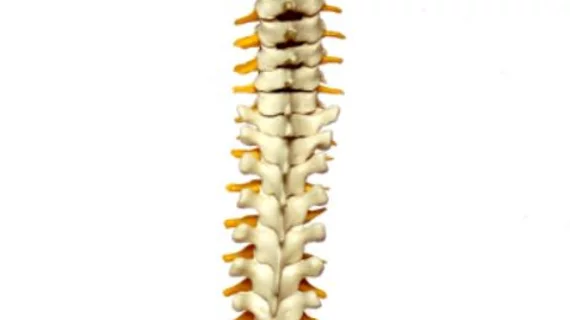Convolutional neural networks (CNNs) can accurately identify vertebral fractures (VFs) on x-rays, according to a Sept. 17 study published in Radiology. The method may improve radiologists’ diagnostic ability.
Vertebral fractures—especially mild ones—are notoriously difficult to diagnose, wrote Sheldon Derkatch, with the University of Manitoba’s Department of Radiology in Winnipeg, and colleagues. VFs are commonly underdiagnosed in the clinical setting and may be overdiagnosed using quantitative criteria, the team wrote.
“Vertebral fractures (VFs) can be a diagnostic challenge because of variability in clinical manifestation and overlap in appearances between mild VF and vertebral configurations not from fractures,” the researchers added. “We sought to determine if convolutional neural networks (CNNs) could be trained to automatically identify VFs on VF assessment (VFA) images acquired by using dual x-ray absorptiometry (DXA)…”
The researchers retrospectively trained and tested their CNN on 12,742 clinical VFA images gathered from February 2010 to December 2017. Diagnostic imaging specialists reported if VF was present or absent on these images.
For VF detection, the CNN achieved an area under the receiver operating characteristic curve of 0.94, a sensitivity of 87.4% and specificity of 88.4%. The CNN recorded a prevalence- and bias-adjusted adjusted k value of 0.76 for agreement with expert readers.
Derkatch et al. suggested that there could be some pushback from physicians and patients due to the black box nature of AI algorithms, but more research would be needed to address this.
“Our work shows that an entirely automated method of VF detection can predict clinically relevant fracture outcomes with an accuracy similar to expert readers while avoiding expert reader intraobserver and interobserver variability,” the authors wrote. “This technology may enhance the diagnostic performance of radiologists and nuclear medicine physicians. It could improve consistency of reporting of incidentally detected VFs, leading to earlier therapeutic intervention and better patient outcomes.”

